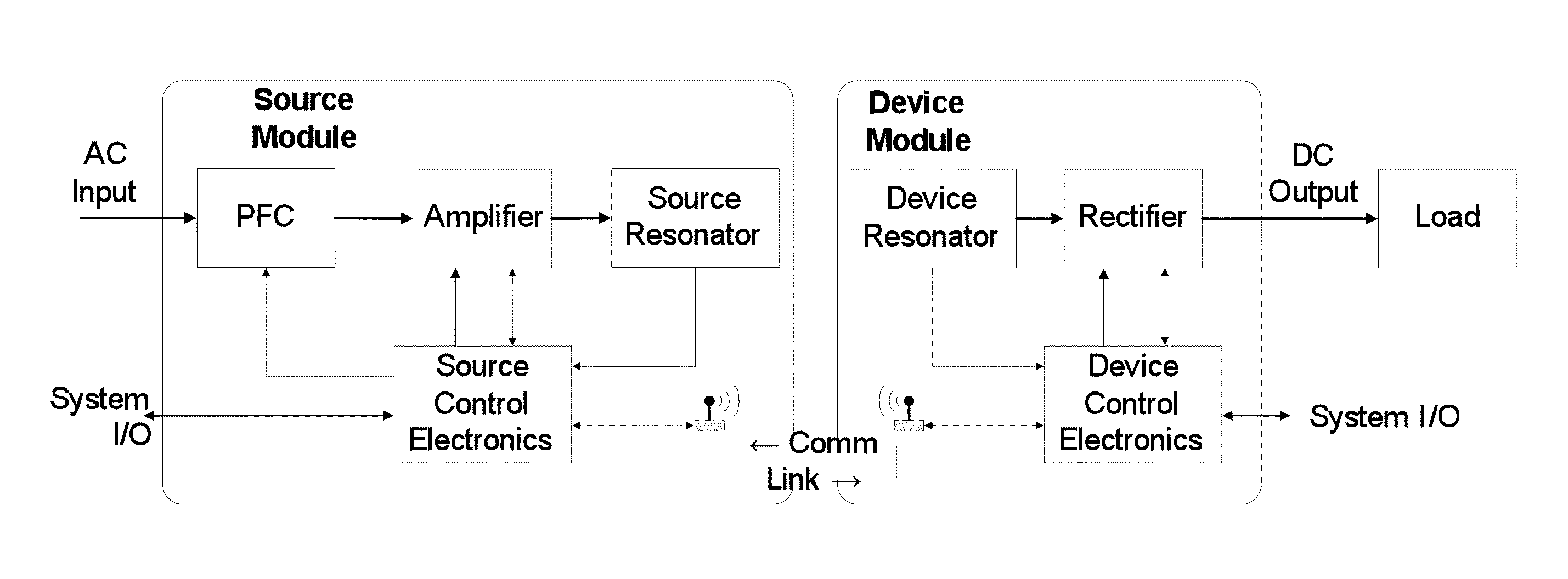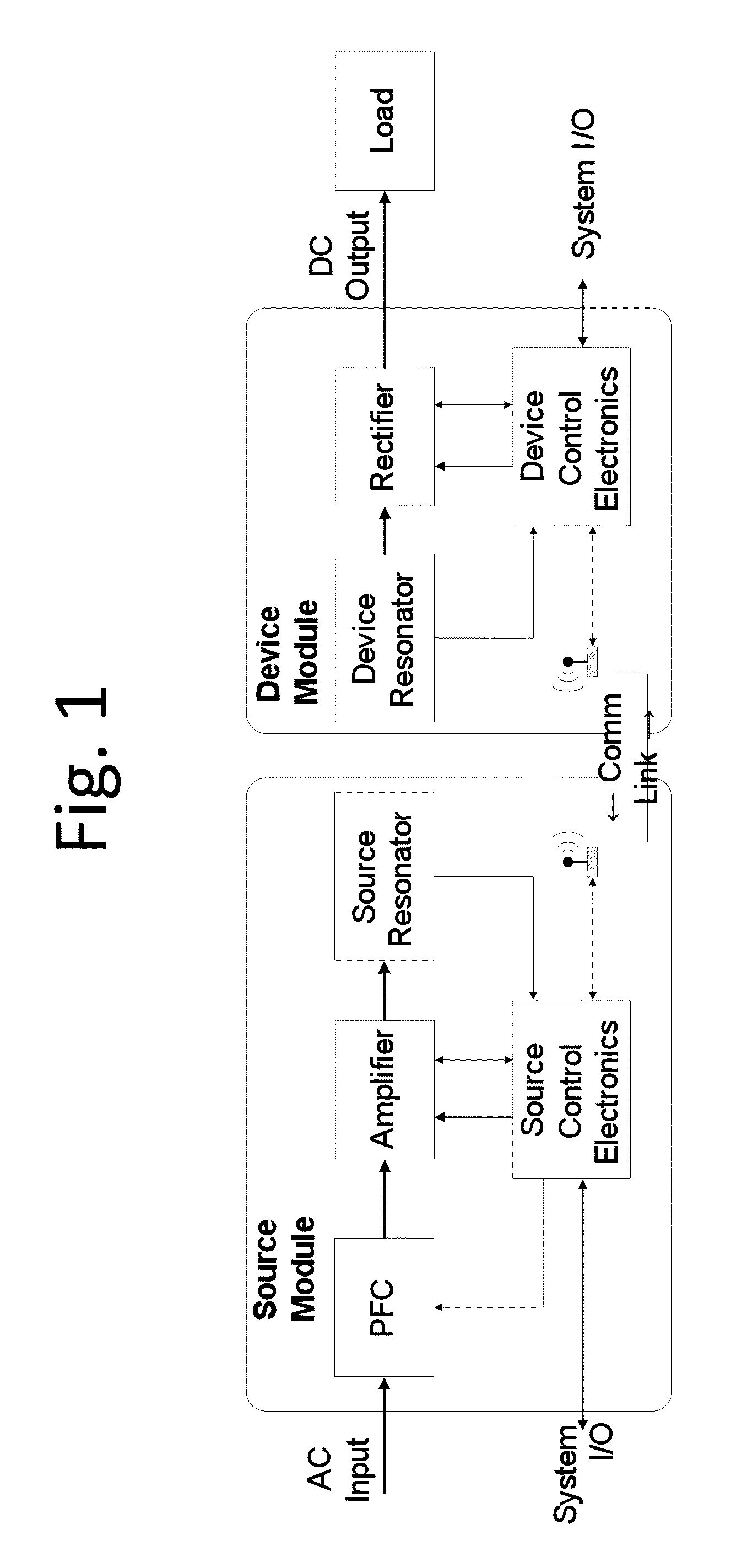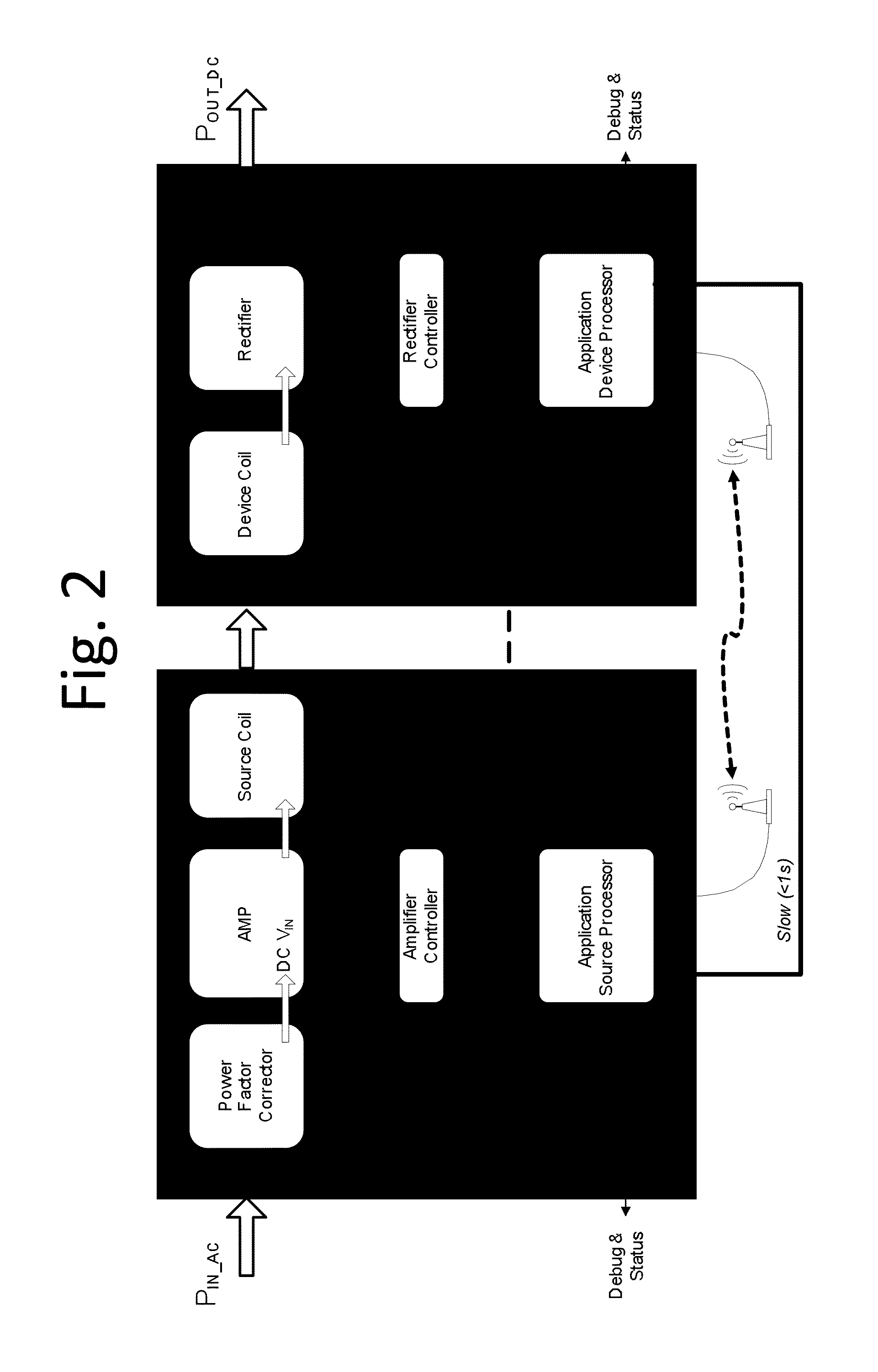Reconfigurable control architectures and algorithms for electric vehicle wireless energy transfer systems
a wireless energy transfer and control architecture technology, applied in the field of wireless energy transfer and methods, can solve the problems of affecting the required low-level power delivery, reliability, and safety performance of the system, and achieve the effect of flexible design and implementation, without the risk of disrupting the control functions of the lower-level power electronics
- Summary
- Abstract
- Description
- Claims
- Application Information
AI Technical Summary
Benefits of technology
Problems solved by technology
Method used
Image
Examples
Embodiment Construction
[0029]This disclosure describes exemplary reconfigurable system control concepts for electric vehicle wireless power transmission systems. In general, an electric vehicle (EV) may be any type of vehicle such as a car, a boat, a plane, a bus, a scooter, a bike, a cart, a moving platform, and the like that comprises a rechargeable battery. The wireless power transmission system may provide power to the battery charging circuit of the electric vehicle and / or it may power the vehicle directly. Wireless power may be provided to the vehicle while it is stationary or while it is moving. The power provided wirelessly to recharge the vehicle battery may be more than 10 Watts (W), more than 100 W, more than a kilowatt (kW), more than 10 kW, and / or more than 100 kW, depending on the storage capacity and power requirements of the vehicle. In some exemplary low power embodiments, fewer control loops and / or less distributed and / or less segmented control architectures may be sufficient to ensure s...
PUM
| Property | Measurement | Unit |
|---|---|---|
| frequency | aaaaa | aaaaa |
| frequency | aaaaa | aaaaa |
| frequency | aaaaa | aaaaa |
Abstract
Description
Claims
Application Information
 Login to View More
Login to View More - R&D
- Intellectual Property
- Life Sciences
- Materials
- Tech Scout
- Unparalleled Data Quality
- Higher Quality Content
- 60% Fewer Hallucinations
Browse by: Latest US Patents, China's latest patents, Technical Efficacy Thesaurus, Application Domain, Technology Topic, Popular Technical Reports.
© 2025 PatSnap. All rights reserved.Legal|Privacy policy|Modern Slavery Act Transparency Statement|Sitemap|About US| Contact US: help@patsnap.com



